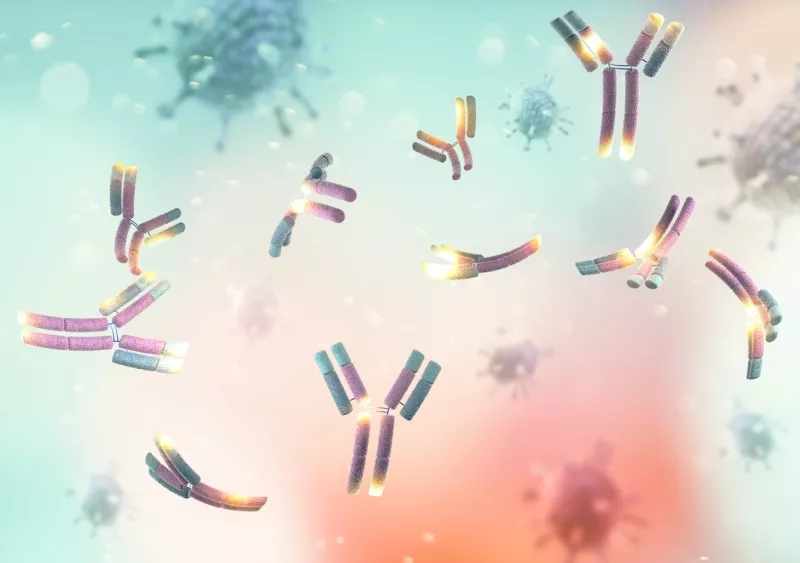With more competition than ever—and customers who are shopping online more than ever before—life sciences companies that want to stay connected to their buyers and ahead of their competition are embracing digital marketing for B2B and B2C product campaigns.
In life sciences industries, marketing has historically relied on in-person sales calls, with representatives encouraging the decision-makers at hospitals and doctors’ offices to purchase their products or promote them to patients who could ultimately buy them themselves. The reps leave brochures and branded swag to share information with stakeholders and keep the product top of mind. These very tangible, in-person marketing methods are tried and true, and they aren’t going anywhere, but in today’s evolving consumer landscape, they aren’t enough, either.
Why Is Digital Marketing for Life Sciences Companies Important?
In recent years, both B2B and B2C customers in all industries—and life sciences is no exception—have been shifting their browsing and buying preferences toward digital platforms, from their laptops at home to their smartphones on the go. And the COVID-19 pandemic dramatically accelerated that shift, making the in-person marketing strategies that life sciences industries had long relied on impossible in many cases.
Now, more than ever, life sciences brands need to be able to reach their audiences—buyers, end-users, and influencers—via a variety of channels, including (and often most importantly) digital. It is vital to have dynamic landing pages, social media accounts, and email marketing systems in place. In the best of times, it means reaching a broader audience more frequently and at lower costs than any brand could with rep visits alone. And in times of disruption, such as the pandemic, it means that when in-person is impossible, that all-important connection between brand and buyer isn’t lost.
On the flip side, both businesses and individual consumers want to research potential purchases on their own time, whenever and however is convenient. Consumers expect brands to have information—about products, pricing, promotions, etc.—readily available at their fingertips via websites, social media accounts, and email newsletters. And with so many alternatives on the market, if potential buyers can’t readily find information about one brand, they’ll move on to the next.
Which Digital Strategies Should Life Sciences Brands Implement?
Life sciences brands can embrace a bevy of digital marketing channels, and in our always-on world, the more robust their multichannel marketing campaigns, the better. We recommend starting with these three:
- Microsites & Landing Pages: When most consumers—both B2B and B2C—need to find a new product or service, the first place they go to find and research their options is a search engine. The stronger your online presence, in terms of content and information available from your website, the more likely they are to find—and choose—your life sciences brand.Life sciences brands can provide value to potential customers by offering e-books, newsletters, and online courses and sharing contact details, pricing, and insurance information. Landing pages should use automatic lead capture so you can continue the conversation even after the initial session has ended.
- Social Media Campaigns: Social media may not be the first place doctors, hospitals, or even individual consumers looking for information on medical purchases. However, social media channels are an incredibly potent way to build brand awareness that strengthens email, direct mail, and even in-person marketing campaigns. For example, one OneTouchPoint client saw a marketing ROI increase of over 200% when combining their direct mail and Facebook campaigns.Why is that? Recent surveys have found that social media users spend an average of 58 minutes per day on Facebook, 53 minutes per day in Instagram, and 49.5 minutes a day on Snapchat. This content is where consumers are introduced to countless brands and what they offer. Ultimately, all this exposure breeds familiarity and trust—the first steps on the road to purchase.
- Email Marketing: Finally, email marketing is key to guiding prospective buyers through the marketing funnel from awareness to purchase. Engage them by sharing valuable content that illustrates how your offering fills their needs. Then, offer to talk brass tacks with your most promising leads, providing virtual or in-person product demos, sales conversations, etc., to close the deal.
Digital Marketing for Life Sciences Is Just One Piece of the Puzzle
Digital marketing is critical for life sciences companies that want to maintain (and grow) their market share, but don’t ditch those traditional strategies, either! The key is to integrate strategies into a holistic, multichannel marketing campaign that reaches buyers and influencers where they are and when they need you. In-person rep visits—and the print marketing materials and swag—remain integral parts of your toolkit.
OneTouchPoint prides itself on supporting the life sciences industry by embracing digital marketing strategies that build brand awareness, drive sales, and enhance the bottom line. Adding digital outreach and developing a multichannel communication strategy can feel like quite the juggling act, but OneTouchPoint is here to help. Contact us or request a quote on your next project to learn more about how OneTouchPoint can transform your digital marketing for the life sciences industry.

